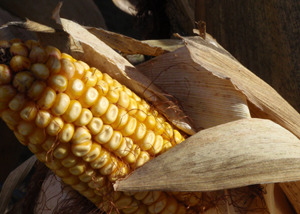Introduction
This article presents a very brief overview of what the term “organic”, as defined by the USDA, means. For more detailed information follow the links at the end of this article as a start. Many people don’t know what it means when food is labeled as organic. This article is a good overview and introduction to organic standards. It’s nice to know the facts!
The U.S. Department of Agriculture (USDA)
(Source: USDA, “About USDA”, http://www.usda.gov/wps/portal/usda/usdahome?navid=ABOUT_USDA , 2011.)
The mission of the USDA is: “We provide leadership on food, agriculture, natural resources, and related issues based on sound public policy, the best available science, and efficient management.” The USDA was formed in 1862.
Organic Foods Production Act of 1990 (OFPA)
(Summarized from ” National Organic Program: Background Information ” from the USDA website, 2002 and 2008.)
The Organic Foods Production Act of 1990, when passed by Congress, required the USDA to develop national standards for agricultural products that were to be produced organically. These standards were to assure consumers that organically produced products met “consistent and uniform standards.
What Does USDA Organic Mean?
(Summarized from ” National Organic Program: Organic Production and Handling Standards ” from the USDA website, 2002 and 2008.)
Note: These standards apply to production processes and do not measure anything that is in the product itself.
Crop Standards
1. Land used for producing organic crops must not have any prohibited substances used on it for at least three years.
2. Soil fertility and crop nutrients will be managed with the following:
a. tillage
b. cultivation practices
c. crop rotations
d. cover crops
e. and supplemented with:
i. animal waste materials
ii. crop waste materials
iii. allowed synthetic materials
3. Crop pests, weeds, and diseases will be controlled by using:
a. physical controls
b. mechanical controls
c. biological controls
d. When the above is not sufficient, the following may be used:
i. biological methods
ii. botanical methods
iii. approved synthetic substances
4. Organic seeds and other planting stock is preferred, but farmers may use non-organic seeds and planting stock under certain conditions.
5. Other prohibited methods include:
b. ionizing radiation
c. sewage sludge
Livestock Standards
1. Animals to be slaughtered must be:
a. raised under organic management from the last third of gestation
b. for poultry, raised under organic management no later than their second day of life
2. When feeding livestock, producers must:
a. use 100% organic agricultural feed
b. may also use allowed vitamin and mineral supplements
3. Animals used for dairy must:
a. be managed organically for a minimum of twelve months
4. Animals to be raised organically must:
a. not be given hormones to promote growth
b. not be given antibiotics for any reason
5. To keep animals healthy:
a. preventive management practices must be used
b. vaccines must be used
c. treatment of a sick animal must not be withheld
d. if prohibited medication is used, the animal may not be sold as organic
6. To be considered organically raised all such animals must:
a. have access to the outdoors
b. have access to a pasture for nutrients
c. They may be temporarily confined for:
i. health
ii. safety
iii. animals stage of production
iv. protection of soil
v. protection of water quality
Handling Standards
1. All non-agricultural ingredients used must be on the list of allowed synthetic and prohibited non-synthetic substances
2. Handlers must:
a. prevent mixing of organic with non-organic products
b. protect organic products from contacting prohibited substances
3. In any processed product that is labeled as organic:
a. all agricultural ingredients must be organically produced
b. a non-organic ingredient may be used if it is not commercially available as organic
National Organic Program (NOP)
(Summarized from ” National Organic Program: Background Information ” from the USDA website, 2002 and 2008.)
The National Organic Program (a USDA program), which was started by the National Organic Standards Board (NOSB), was created to carry out the standards set by the NOSB, which sets standards as directed by the Organic Foods Production Act of 1990.
References
The United States Department of Agriculture (USDA)
The National Organic Program (NOP)
The National Organic Program Handbook
The Organic Foods Production Act of 1990 (OFPA of 1990)




